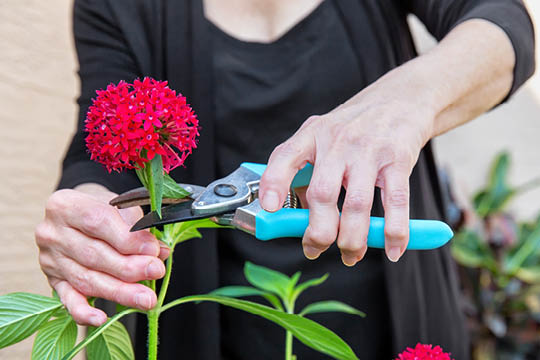Osteoarthritis (OA) refers to a painful joint condition that is the result of a number of movement, lifestyle and genetic factors that progress as you age. OA is the most common type of arthritis, affecting 9.3 per cent of Australians. OA can develop at any age, although it is more common in people over 45 years old, and affects 33 per cent of people over 75 years of age. Globally, osteoarthritis of the knee-and-hip is the eleventh highest contributor to global disability – partly due to its high prevalence. In 2017 to 2018, one in eleven (9.3 per cent) or approximately 2.2 million Australians were living with osteoarthritis.
--What causes osteoarthritis?
OA often involves a decline in the health of the cartilage which lines the joint surfaces, and this may lead to changes in the bones around the joint. OA involves changes to the whole joint, including the cartilage (the smooth layer that covers the ends of a bone), the underlying bone, the ligaments and tendons, as well as the surrounding muscles.
As OA progresses, the changes to the joint can cause pain and loss of movement. The joint can also change in appearance due to swelling or the bones on each side of the joint changing shape (sometimes they may move away from their normal position).
In long-term OA, the nervous system may adapt, and this can increase the pain response. It is important to understand that the pain that occurs with OA is not strongly related to the deterioration that appears in the joint on scans, and that treatment can reduce symptoms and improve physical function.
--How do I know if I have osteoarthritis?
Arthritis can affect anyone, regardless of age or sex but is more common in females who represent three out of every five people with the condition. The pain and functional impact of OA can affect your mental health and anxiety levels, leaving you uncertain about how to get the right balance between rest and movement. Increased body-wide inflammation can contribute to OA through low levels of physical activity, higher levels of body fat and a diet high in processed foods.
The most common symptoms include:
- joint pain
- joint stiffness.
Other joint symptoms can include:
- redness
- warmth
- swelling
- in the latter stages, catching, clunking or grinding in the joint
- people may also feel generally fatigued or unwell because of their arthritis.
In the early stages, most people will notice joint stiffness or a mild ache, particularly in the morning. As symptoms worsen, swelling occurs with increased pain. In the late stage, joints can appear enlarged and slightly different in shape. OA can be diagnosed by a medical professional such as a GP or physiotherapist.
Other common types include knee osteoarthritis and hip osteoarthritis.
--How can physiotherapy help with osteoarthritis?
Your physiotherapist will conduct an assessment of all the relevant issues. This includes the strength and flexibility of the joints, your goals and personal situation and what understanding you have of OA. They will also screen you for non-musculoskeletal causes of your pain and refer you for a medical assessment if required. Addressing these can reduce the impact that OA has on your movement and life.
Physiotherapists can also provide you with a likely prognosis by using an evidence-based approach, drawing on their clinical expertise and providing tailored advice and management. If needed, your physiotherapist may also help you navigate the health system and connect you to the best health services for your situation.
There is no ‘one-size-fits-all’ and your physiotherapist will be able to advise you what management is best for you, as well as clear up misinformation or confusing advice you may have received.
It’s important to note that not all physiotherapists are specialised in pain. For the best treatment outcome, find a physio who specialises in this area.
--How effective is physiotherapy for osteoarthritis?
Physiotherapy involves evidence-based treatment options which are non-pharmaceutical and non-surgical in nature. Physiotherapy treatment is always ‘patient-centred’, ensuring you are informed and respected in the decision-making process. Research shows that education and treatment which empowers you is a significant part of effective OA management.
Physiotherapists will work with you to explore all the possible interventions and work out what is best for you. This may include hands-on treatments or developing an exercise or activity program to reduce pain, improve flexibility and strength and regain the confidence to move.
High-level evidence shows that exercise and physical activity are key to reducing inflammation and pain and improving function. Your physiotherapist will help you to determine what level of activity is enough to challenge your body and your OA joint, but not enough to cause a flare in symptoms.
--What can I do at home?
Rest is the best treatment when a joint is painful and swollen. Apply ice on the area if it is particularly warm, swollen and sore. If the joint is achy but not warm or swollen, heat in the form of a water bath or wheat bag can be useful. Avoid activities that tend to increase your pain.
When pain has improved, you can start some gentle exercises to improve your joint movement and reduce stiffness. If you are unsure about what exercises are appropriate and how often to do them, speak to your physiotherapist.
--How long until I feel better?
Treatment involves managing the condition. You should try to rest when you have pain. It can sometimes take several days to weeks to feel more comfortable. Opioid medications are not recommended for the treatment of hip and or knee OA, so see your physiotherapist to assist you in managing your individual condition.

